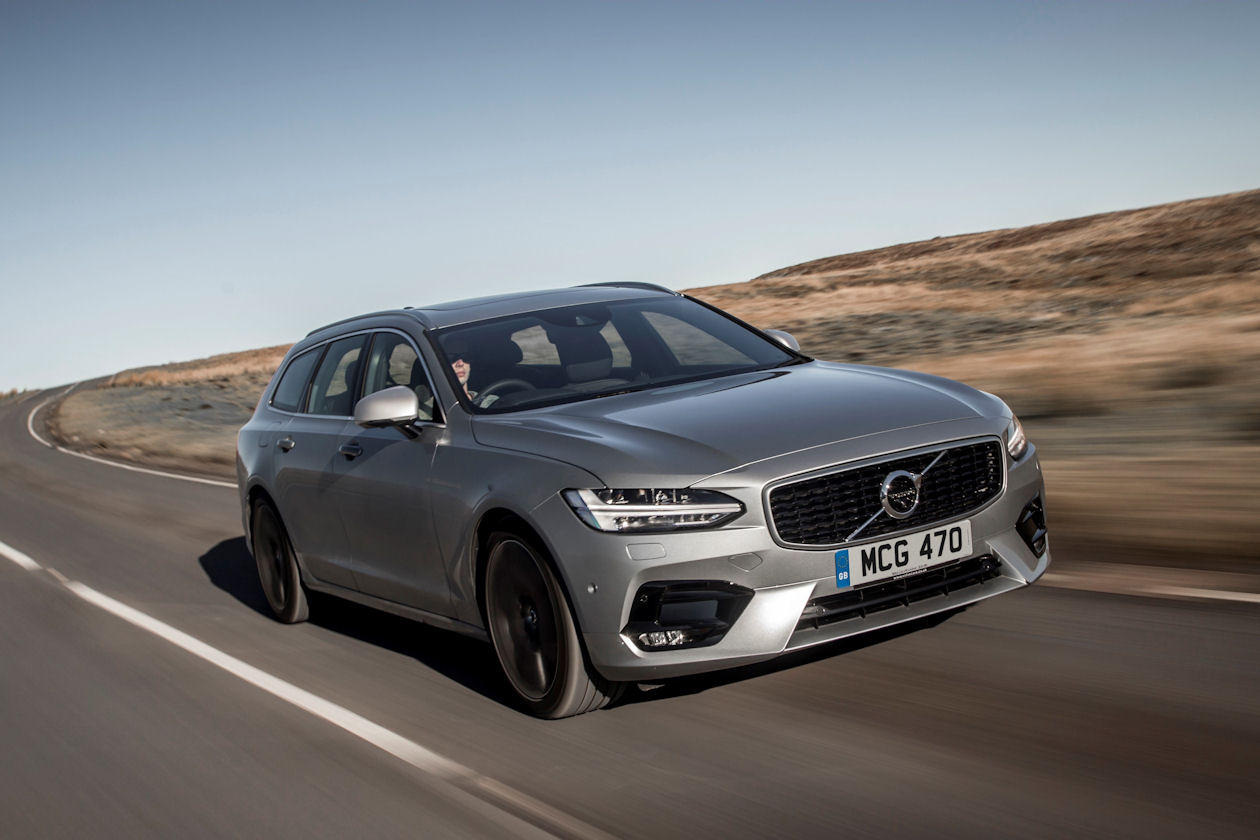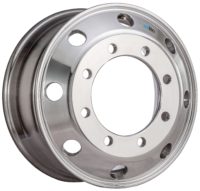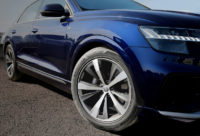Noise reduction technology – not just for UHP tyres
 The Volvo V90’s 20-inch tyres benefitted from noise reducing technology, but this made little difference to the 17-inch fitment
The Volvo V90’s 20-inch tyres benefitted from noise reducing technology, but this made little difference to the 17-inch fitment
Tyre noise can drain the pleasure out of driving and is often an issue when fitting low profile or wide tyres. Many manufacturers combat the problem, particularly when supplying OEM partners, by affixing sound-absorbing foam to the tyre’s inside. But now effective are such solutions? This is a question that Swedish motoring publication Vi Bilägare set out to solve.
In a recent issue (11/2019), Vi Bilägare compared three sizes of noise-cancelling tyre with their standard counterparts. Blind testing procedures were used, with the testers unaware whether they were working with a set of standard or noise-cancelling tyres.
Tyre 1
The first tyre examined was the Pirelli P Zero, size 255/35 R20. This is fitted in its Pirelli Noise Cancelling System (PNCS) guise to the Volvo V90 as original equipment, and Vi Bilägare used this car to compare both sets.
The evaluation began with subjective tests on both smooth and rough asphalt, with a 30-year-old and a 60-year-old on board to take age-related changes of hearing into account. Neither tester could identify which tyre was fitted when driving on smooth tarmac, however both estimated vehicle speed on the rougher surface as “lower” when travelling in the PNCS-shod Volvo. They summed up by declaring noise-cancelling technology most beneficial when driving at higher speeds on rougher asphalt.
Vi Bilägare then measured noise using a sound level meter (Brül & Kjaer 2260 Investigator). The difference in noise on the smooth asphalt was just 0.2 dB at 70km/h and 0.4 dB at 90km/h and 110km/h. As expected, the difference was more pronounced on the rough surface. The standard tyre was 0.8 dB louder at the two lower speeds. Surprisingly, given the testers’ claim that noise-cancelling technology came into its own at speed, the difference decreased to 0.6 dB at 110km/h.
Tyre 2
The Volvo V90 D4 AWD R-Design was again pressed into duty for testing the second tyre size. Vi Bilägare fitted the car with Goodyear Eagle F1 Asymmetric 3 tyres in size 225/55 R17. We’d expect the benefit of noise-cancelling foam would be less for this broader-sidewall tyre. This expectation was confirmed when both the younger and the more senior Vi Bilägare tester failed to correctly identify which tyre version they were testing, even on rough asphalt. “The sound meter later shows an actual difference, but with the 17-inch wheels the road noise is already so low that it has no significance for the perceived comfort,” comments the publication.
The sound level meter detected a 0.2 dB difference between the Goodyear tyres with SoundComfort Technology and those without at 70, 90 and 110km/h on smooth asphalt. The same difference was detected for the two lower speeds when driving on rough asphalt, increasing to 0.4 dB at 110km/h.
Tyre 3
With on-road prices in the UK beginning north of £50k, the Volvo V90 isn’t a cheap car. That kind of money buys a fair amount of in-car insulation, so the team at Vi Bilägare was curious to know what benefit noise-cancelling technology could bring to lower-priced cars with less sound insulation. For this, they turned to the Ford Focus Active 1.0T. The test car was fitted with Goodyear EfficientGrip Performance tyres in size 215/55 R16.
While simply swapping the 20-inch fitment for smaller, broader sidewall tyres sorted out most Volvo noise issues, sound-reducing tyres helped improve in-car comfort when fitted to the Focus. The Vi Bilägare testers heard a difference even on smooth asphalt, and describe the improvement delivered by noise-reducing tyres on rough asphalt as “significant” at 110km/h.
“With the SoundComfort tyre, the driver and rear passenger can talk to each other without having to raise their voices. It is not only the tyre noise around 200-250 Hz that has decreased, the reduced tyre vibration also gives a sound improvement in several frequency ranges that travels up through the car chassis. The harsh infra sounds at about 80 Hz are lowered and the pressure against the eardrums, which exists with the standard tyre, has disappeared.”
The sound level meter recorded a 0.6 dB difference at 70km/h on smooth asphalt, increasing to 1.2 dB at 90km/h and 110km/h. The difference on rough asphalt was 1.6 dB at 70km/h and 110km/h but curiously dropped to 0.6 dB at 90km/h. “In total, the cabin noise fell by 1.6 dB on rough asphalt at 110 km/h. When analysing the sound character, the sound volume has decreased by 2.1 dB in the 200–250 Hz frequency band. When we release the gas and coasts with silent motor from 110 km/h, the silent tyres produce as much as 3,4 dB lower road noise at 200-250 Hz,” comments Vi Bilägare.
Noise reduction effect depends on the tyre – and the car
Tyre makers focus their noise reduction efforts more on larger, low profile tyre sizes. Gains can be made here, regardless of vehicle make and model. But Vi Bilägare’s experience shows that cars further down the automotive food chain – vehicles fitted with 17-, 16- and even 15-inch tyre sizes – can benefit greatly from insulating tyre foam.
“Noise-cancelling technology works and actually provides better comfort – under the right conditions,” elaborates the Swedish motoring publication. “It improves the sound level of large low-profile tyres, but on a well-soundproofed premium car it has no appreciable effect in smaller sizes. The technology works, but the road noise is already so low that other noise sources are more disturbing.” But the technology should by no means be limited to low profile tyres: “We do see a strong need for noise-cancelling tyres also for smaller sizes. Not to Audi, Tesla or Volvo, but to cars like Ford, Kia, Mazda, Toyota and other cheaper volume cars.”
As an aside, Vi Bilägare also points out that the soundbars and decibel value given on a tyre’s EU label bear no relation to the values it measured. This reference value only indicates the sound level outside the car.





Comments